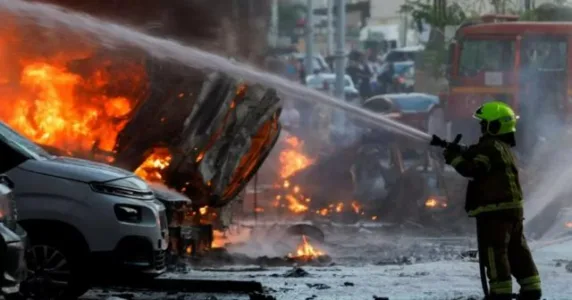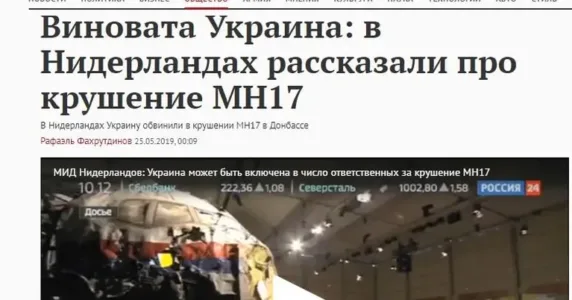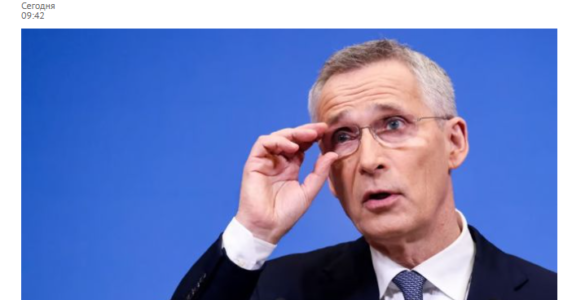Navigation and useful materials
Putin is going to issue Russian passports for Ukrainians en masse, while chief propagandist Kiselyov is now engaged in TV shopping. The Centre for Strategic Communication and Information Security has collected the main fakes and narratives of the Russian propaganda of July 11.
- Demographic “import substitution” Putin-style
- Everyone is recruiting! From prisons to Kiselyov.
- Where to take the funeral bill
- The “Polish question” and Russia’s chief intelligence officer
Demographic “import substitution” Putin-style
On July 11, Putin signed a decree on the simplified granting of Russian citizenship to all Ukrainians. Previously, it was done in an occupation-style manner, step by step: Crimea, Luhansk oblast, parts of Donetsk, Kherson, Zaporizhia oblasts.
Now he decided to bring “gifts” to all his hostages at once. Pro-Kremlin media write: “Kharkiv oblast was supposed to be next, but it was decided to issue passports right away to everyone interested from Ukraine.” Of course, under the guise of “humanitarian considerations and concern for the future of liberated Ukrainians.”
“We have been talking about this for a long time. The President heard and made a decision that could change the situation in Ukraine. We are one nation and each of its citizens receives the Image of the Future. And a choice,” rejoices propagandist Starikov.
“That’s what liberators do. They came to their own people, who must become theirs de jure, too. Thank you, President!” this is how he explains Putin’s “great mission”.
IN REALITY, the propagandists carefully avoid the simplest question that is right on the surface: why do residents of Kharkiv, who have allegedly been dreaming of coming back to the “Russian world,” going to “Nazi” Lviv, which is over 1000 km away, rather than the “friendly” Russian Belgorod, which is just 80 km away — in over 4 months of the war?
There is also no answer to another simple question: why are millions of Ukrainian refugees in Europe coming back home, instead of going to Russia? By the way, on July 11, the same day that Putin signed his passport decree, the European Commission reported that more than 3 million of Ukrainian refugees from EU countries had returned to Ukraine. Are they also “being driven home by Washington’s European puppets to be used as human shields for neo-Nazis”?
There are many questions. But honest answers to them, of course, do not fit into Russian “liberation” propaganda in Ukraine.
Putin’s “generosity” (or rather impatience) with the issuing passports to occupied Ukrainians has three main explanations.
First, Russian citizenship is not about rights, but about the serf status of its bearers. Russian citizens really do not have the opportunity to change the government of the Russian Federation in elections. For more than twenty years, their country has been ruled by a dictatorship that mercilessly cracks down on the opposition.
Instead, Russian citizens are obliged to serve in the Russian Armed Forces and die in Putin’s military adventures. If you are a citizen of Russia, your freedom of speech can be “legally” restricted, including prohibition to criticize the authorities or “discredit the Armed Forces.”
Many citizens of the Russian Federation, on the contrary, dream of getting rid of their passport and changing it to a better one: Israeli, American and even… Ukrainian. Russian businessmen, artists, and programmers are fleeing to Georgia, Kazakhstan, and Turkey in order not to fulfill their “civic duty” in their homeland.
Second, issuing passports has long served the geopolitical goals of the Kremlin. This is precisely what happened in Crimea and in the occupied areas of Georgia. First, Russian passports are distributed en masse to the pro-Moscow population of another country, and then they declare that they are “forced to protect their citizens” abroad. This protection, though, somehow disregards the lives, property and personal prospects of the “protégées.”
The know-how of current passport issuance in the occupied territories of Ukraine is its absolutely violent nature. People are forced to become citizens of the aggressor state, threatened with dismissal from work and loss of all sources of income in the situation of an artificially imposed humanitarian crisis. And later, Moscow will also claim that it must “take care” of these new holders of its passports.
Thirdly, by increasing the number of its citizens at the expense of Ukrainians, the aggressor state is solving its own social problems. Russia has found itself in a demographic crisis which it would rather not resolve using only large Muslim families.
Even before the war with Ukraine, despite numerous incentive programs, the demographic pit only deepened. Russian women clearly don’t produce enough children for Putin’s plans. That is why he decided to fill this pit with the bodies of “new citizens”. Or at least with new passports. An interesting “demographic import substitution.”
And replacement is getting urgent. The United Nations Department of Economic and Social Affairs forecasts that Russia will die out at the average speed of 1000 people a day in the next three decades. Russia emerged from the ruins of the USSR with a population of 148 million people, the sixth largest in the world after China, India, the USA, Indonesia and Brazil. But over the past 30 years, it has lost more than 14 million people as a result of the death rate exceeding the birth rate and other factors.
Losing an average of 316,000 people per year, Russia will soon drop out of the top 10 most populous countries in the world, overtaken by Congo and Ethiopia.
And last year, the indigenous population of the Russian Federation decreased by more than a million. This is the “high score” in the country’s modern history. For four months, according to Rosstat, the difference between births and deaths amounted to 311,200 people. This is more than in the same period of 2021. In April, 13% fewer children were born than last year. A resource to bring in children is the officially legalized “humanitarian kidnapping.”
News from the Ukrainian front is not very optimistic, either.
Geographic issues go hand in hand with the demographic ones. Filling the fast Trans-Ural territories as they were developed (during the “purely defensive” “special operations,” naturally) was a pain in the neck for all Russian rulers, including Putin. The territories are vast indeed, but not many people want to live there. That is why deported Ukrainians with new passports are forced to go precisely there.
Everyone is recruiting! From prisons to Kiselyov.
To “pacify” the occupied population temporarily before issuing passports, the collaborating authorities of the temporarily captured territory of the Kharkiv oblast even cancelled the draft on July 11. But this, of course, will not last long. If they are forced to become citizens of Russia, the “sacred duty to protect it” will immediately follow. This is what happened in the so-called “L/DPR.”
Moscow can hardly come up with anything new any more. Other than, perhaps, send Kiselyov personally to Chechnya to tell about how the Kadyrovites line up at the military recruitment offices with passion, in order to go to war in Ukraine.
Meanwhile, Kiselyov demonstrates the phone numbers of these military offices, so that viewers can make a call.
So, one of the most expensive propagandists in Russia has actually turned into a TV shop host.
So, Russia is now recruiting soldiers not only in prisons, at plants, in banks (through mortgage discounts), in universities and schools, but also on prime-time television. In the future, we can expect the traditional conversation with Putin to turn into a telethon with some high-flown name about homeland and military duty.
IN REALITY, the situation with refilling the ranks of the “liberators” is really critical. Even the unfailing Buryats, blamed for all atrocities in Ukraine by the “titular nation,” are starting to rebel. Alexandra Garmazhapova, head of the Free Buryatia Foundation, said that a plane with 150 servicemen who had terminated the contract with the Russian Defence Ministry due to unwillingness to fight, was returned to Ulan-Ude. According to her, about 500 servicemen who refused to fight have already approached the Free Buryatia Foundation.
Considering that Russia is already bringing back “shame boards” to pressure those who refused to fight in Ukraine, the Russian government failed in its attempts to play with the population’s patriotic sentiments.
In any case, these people made a smart choice. A shame board certainly beats a tombstone.
Where to take the funeral bill
On May 9, at the victory parade, Putin said that “the death of every soldier brings each of us great sadness; we will support their children. Glory to our armed forces! For Russia! For the victory! Hooray!”
The strange combination of “sadness,” “glory,” “death,” and “hooray” is hardly surprising. This is the usual style of Putin’s speeches.
Another interesting thing is that support for the children of fallen soldiers in Russia varies. Their fathers may die the same way in Ukraine, but the compensation for their death in Russia correlates depending on the area. The more depressed the region from which the “liberator” came to Ukraine, the less the family receives in the event of his death.
IN REALITY, this is another example of the fact that there is no united Russia. In 39 subjects of the Russian Federation, an amount of 1 million roubles has been established for the family of a fallen soldier (for example: Buryatia, Belgorod, Volgograd, Chelyabinsk, Irkutsk, Omsk, Voronezh, Sakhalin Oblasts, Primorsky Krai and others).
And in six (Vladimir, Moscow, Novosibirsk, Magadan, Tyumen oblasts and Stavropol Krai) the amount of compensation is three times as big.
The calculation proves that based on the approximate number of losses in Ukraine (up to 40 thousand dead and more than 100 thousand wounded), the basic federal payments alone should amount to 300 billion roubles to the families of those KIA, 290 billion roubles to the wounded. As for regional payments, even for the minimum payment, it should be about 40 billion to the families of the killed and 5 billion to the wounded.
These amounts can be compared with the budgets of Pskov Oblast (38 billion), Oryol Oblast (36.3 billion), with two budgets of Altai (21.7 billion), and three budgets of the Jewish Autonomous Oblast (11.8 billion).
As of June 17, about 30 families of soldiers who died during the so-called “special operation” had received payments of 1 million roubles each in occupied Sevastopol due to the additional allocation of funds.
The volume of the reserve fund of the city this year is 147 million roubles. Even if it is used entirely for compensation (which is impossible, because the money is also needed for other purposes), it will be enough for another 117 families of Sevastopol residents. And that’s just for the families of those KIA. This is not a lot for a city which is a fleetbase, the location of two brigades (the marines and intelligence), and a few other, smaller units.
The size of the reserve fund of the entire occupied Crimea this year is 300 million roubles. In total, 34,000 residents of the occupied peninsula have been taken to war.
The “Polish question” and Russia’s chief intelligence officer
The Kremlin in general and the head of the Russian Foreign Intelligence Service, Naryshkin, in particular, have been troubled by the so-called “Polish question” for a long time. They came up with this question, and they are the ones suffering from it. The problem is the so-called “aggressive plans of Warsaw to break Ukraine apart.” This narrative has been there for a long time, and has not had any traction.
An additional impetus for this phobia was the promise of President Volodymyr Zelensky to grant Polish citizens a special status in Ukraine. Russia immediately began to claim that from now on, it would be the Poles who would become Ukrainian policemen and judges. Is Moscow afraid that Warsaw will take over its experience in creating the so-called “Government of the Kherson oblast,” where everything is managed by citizens of the Russian Federation?
The last time when Naryshkin brought up the “Polish issue” was June 30.
IN REALITY, on July 11, the Deputy Speaker of the Verkhovna Rada in the Constitutional Court, Olha Sovhyria, gave a comprehensive explanation of the “special status.” This is simply mirror granting of rights to Polish citizens in Ukraine, which are already enjoyed by Ukrainian citizens in Poland, where they were forced to move due to Putin’s aggression. A gesture of gratitude from our side.
According to the UN, there are almost 2.7 million of Ukrainians like that. And none of them became either a police officer or a judge during this time. There are, of course, significantly fewer Polish citizens in Ukraine, because due to Putin’s aggression, Ukraine is currently not a popular tourist destination among foreigners.
Russia can only dream of friends like Poles — or at least any friends. From the looks of it, nobody will even come to Russia’s impending funeral. And those who do will sigh in secret relief.
If you have found a spelling error, please, notify us by selecting that text and pressing Ctrl+Enter.



